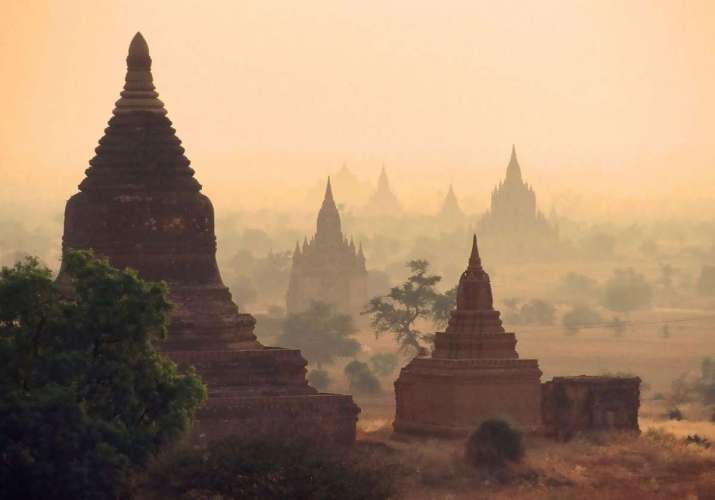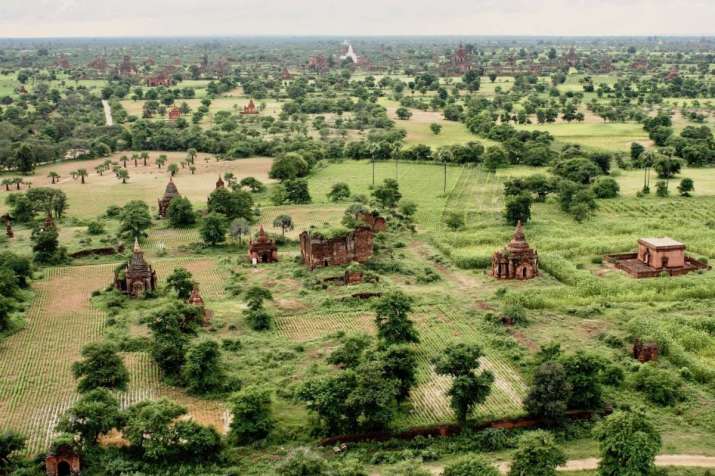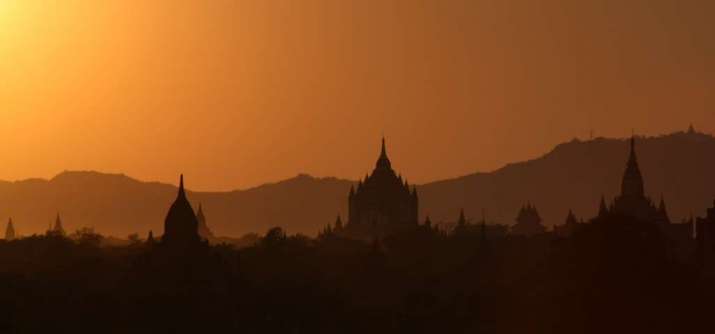
Nearly 25 years after it was first nominated for listing, UNESCO has officially inscribed the ancient Buddhist city of Bagan in Myanmar as a World Heritage Site.*
The proposal was approved during the 43rd session of the World Heritage Committee, held in Baku, Azerbaijan on 6 July, following a recommendation from the International Council on Monuments and Sites, which observed that Myanmar had passed new legislation governing heritage sites and had drawn up a plan aimed at mitigating the impact of growth in tourism and related infrastructure in the historic area.
“Bagan is living heritage, having endured all forms of challenges for more than a thousand years,” said Myanmar diplomat Kyaw Zeya, speaking at the Baku meeting. “Today we are celebrating the joyous moment of the successful inscription of Bagan in the World Heritage List. Afterwards we will continue our efforts on conservation and management of Bagan so that this treasured heritage will remain for another thousand years.” (Channel NewsAsia)
Located on the banks of the Irrawaddy River in Myanmar’s Mandalay Region, the Bagan Archaeological Zone is one of the country’s principal tourist attractions and is also a popular destination for Buddhist pilgrims, who come to visit the ancient monuments dotted over a 42-square-kilometer plain ringed by mist-covered mountains. The area is home to the largest and densest concentration of Buddhist temples, stupas, and monasteries in the world, with thousands of structures dating to the 10th–14th centuries, when the ancient city was the capital of the Kingdom of Pagan (849–1297).

The UNESCO decision recognizes the historic and cultural significance of the site, which boasts in excess of 3,500 Buddhist monuments and is likely to accelerate already rapid growth in tourism to the area.
Beginning under the 2011–16 administration of former president Thein Sein, Myanmar embarked on a major tourism drive. Bagan is now visited by hundreds of thousands of foreign tourists each year, with 282,387 international visitors to the Bagan Archaeological Zone recorded in 2016. Permits to build 42 new hotels or resorts in the area were granted in 2013, then revoked the following year. Early in 2017, permits were reissued for 25 of the developments.
“Bagan is a sacred landscape that features an exceptional array of Buddhist art and architecture, demonstrating centuries of cultural tradition of Theravada Buddhist practices of merit-making, providing dramatic evidence of the Bagan period from the 11th to 13th centuries,” UNESCO said in an advisory earlier in July. “The serial property of eight components is located in the central dry zone of Myanmar, consisting of 3,595 recorded monuments. Being a complex, layered cultural landscape that also incorporates living communities and contemporary urban areas, Bagan was proposed for inscription for being an exceptional and continuing testimony to the Buddhist cultural tradition and to the peak of Bagan civilization under criteria (iii), for containing an extraordinary ensemble of Buddhist monumental architecture under criteria (iv), and for being an exceptional example of living Buddhist beliefs and tradition of merit making under criteria (vi).” (UNESCO Bangkok)
Bagan was first nominated for World Heritage status in 1995 by Myanmar’s ruling military junta, but the proposal was rejected as the government was accused of ignoring expert advice on preserving and restoring the irreplaceable monuments.
In August 2016, central Myanmar was rocked by a 6.8 magnitude earthquake that killed at least four people and damaged scores of Buddhist pagodas and temples in the Bagan Archaeological Zone. According to an estimate from Myanmar’s Ministry of Information, 187 ancient Buddhist pagodas were damaged in Bagan and 228 across the Mandalay Region.**
The ancient kingdom of Pagan was the first to unify the regions that would later form modern-day Myanmar. The kingdom’s 250-year rule over the Irrawaddy valley and its periphery facilitated the spread of Burmese language and culture, and the propagation of Theravada Buddhism in Southeast Asia. More than 10,000 Buddhist temples, pagodas, and monasteries were constructed on the Bagan plains alone at Pagan’s height between the 11th and 13th centuries. Today, more than 2,200 temples and pagodas survive, however many of the centuries-old Buddhist monuments remain in various states of disrepair, while others have been restored in recent years in cooperation with UNESCO advisors.
“This is just the beginning. We will face many challenges ahead in the conservation work [needed] to maintain the value of the heritage site while taking control of the social development impacts,” said Burmese architect U Sun Oo, who is part of a team working to conserve the Buddhist monuments in Bagan. “When we talk about Bagan, we can’t focus only on the temples and pagodas, but the whole plain which these valuable ancient [structures] inhabit. Conservation for this region will also need to consider social development impacts. In the past, [the] authorities neglected this and allowed the building of modern structures, including road expansions, lamp posts, hotels, and more. Those modern structures have already damaged the value of our heritage, so we will need to take these as examples not to be repeated. Otherwise, the uniqueness of Bagan will perish.” (The Irrwaddy)

Myanmar is a predominantly Theravada Buddhist country, with 88 per cent of the population of 51.5 million people identifying as Buddhists, according to census data from 2014. Christians, folk religions, and Muslims make up the bulk of the remainder. Buddhist monks, venerated throughout Burmese society, are estimated to number around 500,000, with some 75,000 nuns in the Southeast Asian country.
* Myanmar Renews Bid to Gain World Heritage Status for Bagan Archaeological Zone (Buddhistdoor Global)
** Three Dead, Scores of Ancient Buddhist Temples Damaged in Myanmar Quake (Buddhistdoor Global)
See more
Bagan Makes UNESCO List, but Challenges Remain (The Irrwaddy)
Bagan inscribed as World Heritage site (Mizzima)
Myanmar’s temple city Bagan awarded UNESCO World Heritage status (Channel NewsAsia)
Myanmar’s temple city Bagan awarded UNESCO World Heritage status (Reuters)
World Heritage status for Bagan in Myanmar (Straits Times)
Bagan wins World Heritage status (Bangkok Post)
Plain of Jars and Bagan inscribed as World Heritage Sites (UNESCO Bangkok)












